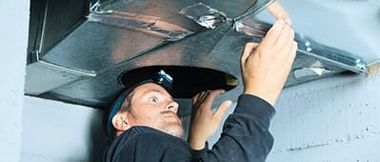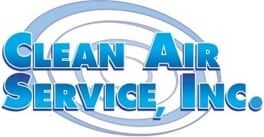Call Us Now: 715-675-4498
920-494-3878
920-494-3878
FAQ
Indoor Air Quality Testing in Wausau & Green Bay/Appleton Area
Frequently Asked Questions
Duct Cleaning:
a. How do I know if it’s time to clean my air duct system?

It might be time to clean your air ducts if:
You regulary clean excessive dust accumulations from furniture or other household items.
You notice "musty" or "stale" odors when the furnace or air conditioner is operating.
You have recently moved to or are currently living in a home that appears to have never been cleaned or has not been cleaned for a long time.
Someone in your home or business suffers from allergies, asthma or respiratory problems and their symptoms have been getting gradually/rapidly worse.
Someone in your family or business suffers from headaches, nasal congestion, nausea, burning sensations in the nose, throat or eyes when they are inside the home or business.
You have dogs, cats or other pets that shed hair or dander in your home.
There are/were smokers in your home or office. (This is characteristic of brown or sometimes black sticky tar coating air ducts and register covers.)
These situations can create indoor air pollution that your HVAC system
may circulate or disturb when the system is running. Call Clean Air Service, Inc. and you'll breathe easy!
b. How often should my ductwork be cleaned?
Clean Air Service, Inc. speaks from experience when we say "Any time is usually a good time to clean the ductwork in your home or business." We find all sorts of interesting items in ductwork like marbles, coins, toys, historic documents and pictures but unfortunately we also find things that are a little less pleasant. It's sometimes difficult to tell what might be lurking in an HVAC system until it is cleaned, especially in older homes or buildings.
Although the EPA recommends air duct cleaning every 3-5 years, we have found certain times warrant special attention to ductwork cleaning including:
New construction or remodeling - because drywall dust, saw dust and construction debris always seem to find their way into the air duct system.
Furnace replacement or the addition of new ductwork - if the furnace is already it will save you and us time during the cleaning process. A newer, more efficient furnace may disturb debris your old furnace didn't affect. Creating or modifying ductwork also changes how air is directed and new ductwork can quickly become contaminated by old dust and debris that previously had no place to go.
Duct cleaning is still a relatively new application for indoor air quality; unfortunately, this also means many homes and businesses have not established routine maintenance or cleaning to keep the HVAC system operating at peak efficiency. Call or email us today to see if your home or business is a good candidate for air duct cleaning.
c. How does Clean Air Service, Inc. clean air ducts?
Clean Air Service, Inc. technicians are trained to use a variety of cleaning techniques that vary based on the application. More information about our cleaning process can be found on our Air Duct Cleaning page or by clicking: ***HERE***
d. Why cleaning by a certified ventilation inspector?
The answer to this question can be found by visiting our Air Duct Cleaning page or by clicking: ***HERE***
e. What should I do before/after my ductwork is cleaned?
That's a great question, we're glad you asked! We've actually assembled some checklists you can use to help determine what you should do before and after the cleaning. Click on the respective checklist names to visit them on our Checklists page:
Pre-Cleaning Checklist
Post-Cleaning Checklist
f. Will my house get dirty when you clean the duct work?
Clean Air Service, Inc. generally uses negative air pressure to clean HVAC systems. That means all the dust and debris we agitate gets drawn into our vacuums or other equipment rather than blowing all around your environment.
For sensitive working environments, we also offer HEPA (High-Efficiency Particulate Air) filtered cleaning to filter up to 0.3 microns of dust or other contaminates.
Although some small dust accumulations may occur near register or access openings, we do our best to clean the mess we make. You can help us keep your house clean by following the instructions on our Pre-cleaning Checklist.
g. How much does duct cleaning usually cost?
Our pricing is based on a number of factors that depend primarily on the size and layout of your home. To ensure you are getting the most accurate quote, please call or email us today and we would be happy to give you a personalized estimate!
Asbestos:
a. What is asbestos?
Asbestos is a mineral fiber commonly used for insulation. When asbestos is damaged or moved, microscopic fibers can be inhaled into the lungs leading to negative health side effects.
For more information about asbestos, please visit the US EPA's webpage: http://www.epa.gov.ru2.gsr.awhoer.net/asbestos/. You can also see pictures of asbestos on ductwork on our Asbestos page: ***HERE***
b. Why won’t Clean Air Service, Inc. clean air ducts wrapped with asbestos?
Unfortunately, the health risks of disturbing asbestos deter us from cleaning your ductwork until it is removed. Please remove any asbestos on or near your ductwork before scheduling an appointment with us.
c. How do I get rid of it?
The EPA has some great information about what course of action should be taken when asbestos is found: EPA Link.
Mold:
a. What is mold?
Mold is a simple, microscopic organism, present virtually everywhere, indoors and outdoors.
For molds to grow and reproduce, they need moisture and a food source (any organic material, such as leaves, wood, paper, or dirt.)
Because molds grow by digesting the organic material, they gradually destroy whatever they grow on. Sometimes, new molds grow on old mold colonies.
Molds release countless tiny lightweight spores that travel through the air. If they land on a damp area the spores begin to grow and digest what they are attached to.
b. Where is mold commonly found?
Mold needs dampness to grow so it will be found in basements, bathrooms, kitchens and after a water leak or flood.
Mold growth on surfaces can often be seen in the form of discoloration, frequently green, gray, brown, or black but also white and other colors.
Mold may appear on ceiling tiles floors, windowsills, insulation, carpet, furniture, behind ductwork and walls (including wallpaper) and in cardboard or paper.
c. What are the air-quality consequences?
Molds release microscopic spores that travel through the air. It is common to find mold spores in indoor air although most of the airborne spores found indoors, where there is no mold infestation come, from outdoor sources.
Mold spores generally cause health problems when they are present in large numbers due to active or recent mold growth within the home, office or school.
Radon:
a. What is radon?
Radon is a tasteless, odorless, radioactive gas that is released during the process of the natural decay of uranium found in almost all soils.
Browse Our Website
Contact Information
Email: Info@CleanAirServiceInc.com
Tel: 715-675-4498
Tel: 920-494-3878
Tel: 715-675-4498
Tel: 920-494-3878
Our Location
Green bay, WI
Wausau, WI
Images provided on this website are for personal, non-commercial use. Republication, retransmission, or reproduction of such images is strictly prohibited.
